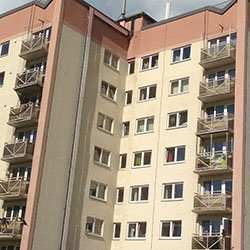I have recently been reading various studies that have been carried out to investigate the effect of noise on health. These studies show a clear link between exposure to excessive noise levels and long term health issues. Governments recognise the impact of this and are increasingly developing policies to reduce noise levels at their source. It is estimated that 54% of the UK population is exposed to daytime noise pollution greater than recommended levels, which given the potential health impacts, is concerning.
Our hearing is complex and quite amazing. We have the ability to filter out background noise, yet subconsciously our brain’s fight-or-flight mechanism is prepared in response to noise that might be considered a threat, to prepare us for action. This can happen while we sleep without us actually being aware of it.
However, our 24 hour society threatens this delicately balanced mechanism, particularly at night. If our fight or flight mechanism is repeatedly triggered in vain, it is not good for us. Laboratory studies have shown that the body releases stress hormones such as adrenaline in response to acute noise. This happens in response to high sound levels in the day, but relatively low levels when sleep or relaxation is disturbed.
Sleep allows our bodies to restore themselves and is very important to maintain good health. The amount of sleep we get matters, but the quality of sleep is also important. Repeated interruptions slow the body’s restoration process, whether or not we are woken. It is suggested that excessive noise levels at night are likely to have a far greater impact on long term health than noise that occurs during the day and the noise level at which sleep is disturbed is relatively low. The World Health Organisation suggests a maximum level of 55dBA, but recommends less than 40 dBA as a long term goal.
Lots of research is available linking traffic noise to health issues such as cardiovascular disease, heart attack, stroke and dementia, with people living near airports having an increased risk. Other reports identified increased hospital admissions for respiratory diseases and pneumonia in young children exposed to road traffic noise as well as hyperactivity and inattention for children who are exposed to higher noise levels, particularly if this happens at night. Studies suggest that the risk of heart disease is increased if affected by road noise between 50 and 60 dBA, with an increased risk of stroke for the elderly.
Experiments have been carried out to determine the effects of aircraft noise at night on healthy people of various ages. The experiments showed that people who were subjected to aircraft noise whilst sleeping had a stiffening of their artery walls, with those exposed to more severe noise having less flexible blood vessels. Tests also found a significant increase in adrenaline for those participating in the experiments. All ages were affected, including young, healthy adults. The researchers concluded that reducing aircraft noise at night would help prevent heart and circulatory problems for those living near airports.
So what relevance does this have for those manufacturing or installing windows and doors?
Before planning permission is given, housing developments that are proposed to be constructed in noisy areas need to demonstrate that the noise levels within the finished buildings will be acceptable. When acoustic consultants are involved in the design of these buildings, a key area that they focus on is the specification of the windows and doors. Most wall constructions achieve between 50 and 60 dB Rw, whilst a standard double glazed window or door will achieve roughly 20 to 25 dB Rw. That means that the window or door is the weak point in the construction.
It therefore follows that whether you are installing in a new development, or replacing existing windows, fitting noise reducing products will make a substantial difference to the noise levels inside the building. I have seen (or rather heard) the difference that replacing standard windows with an enhanced acoustic specification makes – it resulted in a noticeable reduction in the noise levels inside the building. There are other areas that need to be addressed, but in comparison to dealing with the windows and doors, these are pretty minor.
The ability of windows and doors to keep burglars and the prevent the loss of heat has already been well promoted and used to sell products. I believe the industry now has the opportunity to design and then sell products that reduce noise. By doing this, we will not only make people more comfortable, but improve their health and maybe even save lives.



